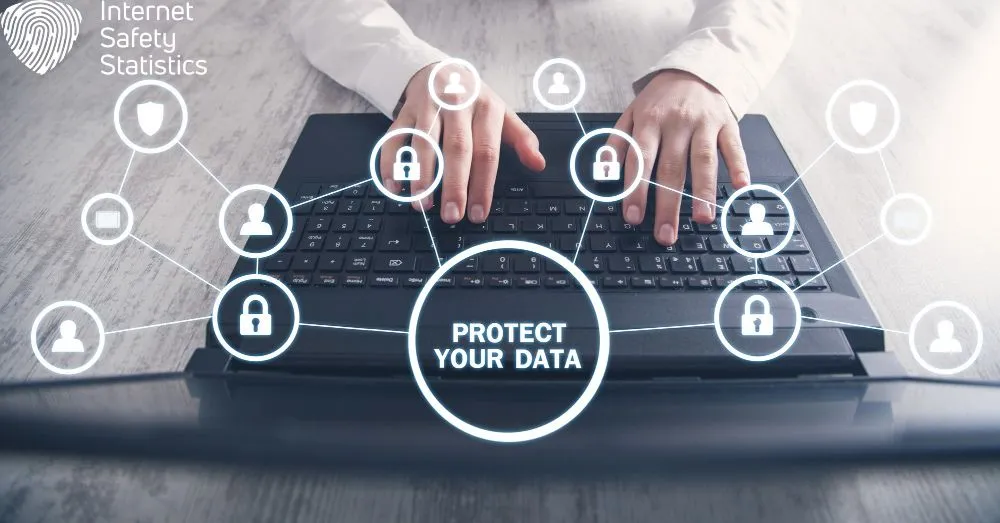
Ever received a creepy ad eerily matching your recent online search? That’s just one glimpse into the hidden world of data privacy. This article unlocks the secrets of this crucial topic, exploring how our information is handled, the laws protecting it, the major data privacy solutions, and the real-world dangers lurking in the shadows. Get ready to take control of your digital footprint!
Understanding Data Privacy
Data privacy involves safeguarding information to maintain its confidentiality, integrity, and availability. Confidentiality ensures only authorised access, integrity assures data accuracy, and availability guarantees it’s accessible when needed.
Legal Frameworks and Regulations
Legal guardians, like GDPR (General Data Protection Regulation) and CCPA (California Consumer Privacy Act), set the rules for data protection. These regulations ensure fair and secure handling of personal information, and non-compliance can lead to hefty fines.
Impact of Non-Compliance
Failing to adhere to data privacy regulations carries severe consequences. Companies may face legal actions, reputational damage, and financial losses. It’s not just about following rules; it’s about fostering trust with those whose information is held.
Identifying Cybersecurity Threats
Data privacy is the right of individuals to control how their personal information is collected, used, and shared by others. However, data privacy is constantly under threat from various cyberattacks that aim to access, steal, or manipulate sensitive data for malicious purposes.
Common Threats to Data Privacy
Some of the most common cybersecurity threats include hacking, phishing, ransomware, misconfigurations, credential stuffing, and injection attacks. These attacks can exploit vulnerabilities in software, hardware, networks, or human factors to compromise the confidentiality, integrity, or availability of data.
Cyber threats are not static but rather evolving and adapting to the changing landscape of technology and society. Hackers are constantly developing new techniques, tools, and strategies to bypass security measures and exploit new opportunities.
For example, the rise of cloud computing, Internet of Things (IoT), and artificial intelligence (AI) has created new challenges and risks for data privacy as these technologies increase the volume, variety, and velocity of data generation and processing. Moreover, cyber threats are becoming more sophisticated, coordinated, and targeted, as hackers often operate in groups or with the support of state actors.
The High Cost of Data Breaches and the Need for Data Privacy
The consequences of data breaches can be devastating for both individuals and organisations. Data breaches can result in identity theft, fraud, blackmail, extortion, reputational damage, legal liability, regulatory fines, and loss of trust. For instance, some of the biggest data breaches in recent history have affected hundreds of millions or even billions of users, such as Yahoo, Equifax, Marriott, Facebook, and LinkedIn.
These breaches have exposed personal information such as names, email addresses, passwords, security questions, credit card numbers, social security numbers, passport numbers, and biometric data. The victims of these breaches have faced increased risks of phishing, spam, account takeover, and financial losses.
Therefore, data privacy is a crucial issue that requires constant vigilance and proactive solutions. Individuals and organisations should adopt best practices and standards to protect their data, such as using strong passwords, encryption, multifactor authentication, firewalls, antivirus software, and VPNs.
They should also educate themselves and their employees about the common cyber threats and how to prevent and respond to them. Furthermore, they should monitor their data and systems for any signs of compromise and report any incidents to the relevant authorities. Data privacy is not only a right but also a responsibility that everyone should take seriously.
Evolving Nature of Cyber Threats
Cyber threats evolve like crafty chameleons, adapting to new technologies. As we embrace innovation, so do cybercriminals. Staying one step ahead demands constant vigilance and adaptive cybersecurity solutions.
Best Data Privacy Solutions and Practices

Data privacy is a crucial issue that requires constant vigilance and proactive solutions. There are several strategies that individuals and organisations can adopt to protect their data from cyber threats, such as encryption, access control, data masking and anonymisation, data loss prevention, and regular auditing and monitoring.
Encryption
Encryption is a process of transforming data into an unreadable form using a secret key so that only authorised parties can access it. Encryption can protect data in transit, such as when it is sent over the internet, and data at rest, such as when it is stored on a device or a server.
There are different encryption methods, such as symmetric encryption, asymmetric encryption, and hashing, that have different applications and trade-offs. One of the most important applications of encryption is end-to-end encryption, which ensures that the communication between two parties is secure and private, without any intermediaries being able to access or modify the data.
Access Control
Access control is a mechanism of restricting access to sensitive data based on the identity and role of the user. Access control can prevent unauthorised or malicious users from accessing, modifying, or deleting data.
There are various access management solutions, such as role-based access control, attribute-based access control, and mandatory access control, that define different rules and policies for granting or denying access. Access control also requires strong authentication mechanisms, such as passwords, biometrics, or multifactor authentication, to verify the identity of the user.
Data Masking and Anonymisation
Data masking and anonymisation are strategies to protect sensitive information by replacing or removing identifying elements, such as names, addresses, or social security numbers, with fictitious or random values.
This solution can be used in various industries, especially in testing environments, where real data is needed to perform quality assurance, but without exposing the actual data to testers or developers. Data masking and anonymisation can reduce the risk of data breaches and comply with data privacy regulations.
Data Loss Prevention (DLP)
Data loss prevention (DLP) is a solution that helps prevent unauthorised data disclosure, such as accidental or intentional leakage, theft, or sabotage. DLP solutions can perform content discovery, classification, and policy enforcement to identify and protect sensitive data across different channels and locations.
For example, DLP solutions can scan emails, attachments, cloud storage, removable devices, and network traffic and apply appropriate actions, such as blocking, encrypting, or deleting, based on predefined rules and policies.
Regular Auditing and Monitoring
Regular auditing and monitoring are essential for maintaining data privacy and security. Auditing and monitoring can help detect and respond to any anomalies, breaches, or violations that may occur in the data and systems.
Auditing and monitoring can use various tools and technologies, such as firewalls, antivirus software, intrusion detection and prevention systems, and security information and event management systems, to collect and analyse data access and usage logs.
Audit logs can provide valuable information, such as who accessed what data, when, where, how, and why, and can help identify potential threats and vulnerabilities, as well as evidence for investigation and accountability.
Privacy by Design
Privacy by design is an approach to product and system development that integrates privacy principles from the very beginning of the design process. Privacy by design aims to enhance data protection and user experience by ensuring that privacy is not an afterthought but a core value and a default setting. By embedding privacy principles from the outset, privacy by design can offer several benefits, such as:
- Reducing the risk of data breaches and complying with data privacy regulations, such as the GDPR, which incorporates privacy by design as a legal requirement.
- Building trust and confidence among customers and stakeholders, who value their privacy and expect their data to be handled securely and ethically.
- Enhancing innovation and competitiveness by creating products and systems that are user-centric, transparent, and respectful of privacy rights and preferences.
Privacy by design is based on seven foundational principles, which are:
- Proactive not reactive; preventive not remedial;
- Privacy as the default setting.
- Privacy embedded into design.
- Full functionality – positive-sum, not zero-sum.
- End-to-end security – full lifecycle protection.
- Visibility and transparency – keep it open.
- Respect for user privacy – keep it user-centric.
Privacy by design is not only a concept but also a practice that requires continuous attention and improvement. Individuals and organisations should adopt privacy by design as a holistic and strategic approach to data privacy and security and apply it in their daily activities and operations.
Employee Training and Awareness

Employees are the first line of defence in protecting data privacy and security, but they can also be the weakest link if they are not aware of their responsibilities and best practices. Therefore, it is vital for organisations to provide ongoing training programs to educate their staff about cybersecurity and data protection.
Training programs can help employees understand the importance of data privacy and security, the common cyber threats and risks, and the policies and procedures to follow in case of an incident. Training programs can also teach employees how to use the technology and tools available to protect data, such as encryption, access control, data masking, and data loss prevention.
Ongoing training programs can ensure that employees are updated on the latest developments and trends in data privacy and security, such as new regulations, standards, and best practices. These programs can also help employees develop a culture of data privacy and security, where they value and respect their own and others’ personal information and act with integrity and transparency.
By investing in ongoing training programs, organisations can enhance their data privacy and security posture, build trust and confidence among their customers and stakeholders, and foster innovation and competitiveness in the digital age.
Data privacy solutions are essential to protect data from cyber threats and comply with data privacy regulations. These solutions require a holistic and strategic approach, such as privacy by design and the involvement and awareness of all stakeholders, especially employees. Data privacy solutions can enhance data protection and user experience, build trust and confidence, and foster innovation and competitiveness.
